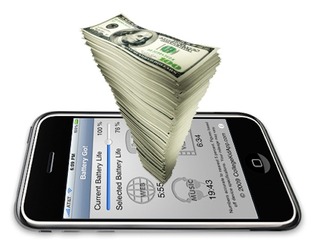
Referly debuts API; referral perks abound
Any company can now set-up a customer acquisition referral system through Referly

With as much as people love to share the gems they find on the Internet, for the most part, they aren't getting any perks for their free marketing efforts. Referly is one company trying to turn your broadcasting of products and services you love to friends and family and get something in return. The young startup that went through both the Y-Combinator and 500 Startups incubators has just opened up its API to allow any online merchant the opportunity to build a referral program.
Now each time a someone clicks on a revelry link and makes a purchase, the person that posted the link gets some kind of return on their word-spreading action.
As of Monday, the company is also debuting its own retail directory to better browse and discover products that other Referly users have posted.
The beta API service is currently free for use and businesses choose the perk that referrers will receive.
To set up the system, businesses fund their account with a pre-paid deposit and revelry rewards the users.

The service is open to all merchants, but are going to have a special focus on software-as-a-service companies, which are less likely to have a referral system compared to some retail services that give users cash back or coupons for introducing friends to their service.
With social shopping experiencing exceptional growth lately, Referly has the opportunity to bring together a lot of brands that are willing to pass of the customer acquisition rate off to individuals.
In a similar vein, Facebook is working on adding a "want" button with lots of retailers clamoring to collect that type of data and help friends make shopping very social and simple.
Though currently in beta, Referly does have plans to charge for this service in the future both as a flat-rate option and as a pay-as-you-go model.
One other company that has seen the value in social referrals, Fancy, has pivoted to take advantage of this shift in online behavior.
Each time a user shares, say, an image of certain brand of wristwatch, they will get a link with a unique referral code. If someone else spots this image and buys the watch through that link–via Twitter, Facebook or elsewhere – the user who shared the photo receives 2% of the value of the purchase 30 days later as credit in their Fancy account.
You mean to say I can make money just by posting pictures of things I like? Now that is motivation.
But Fancy posters better be spurring a lot of purchases or some seriously high-ticket items if users are only receiving 2%. Amazon‘s affiliate program begins at 4%, and is even higher for apparel and accessories categories. StyleOwner, a service that encourages users to create online fashion boutiques, offers a 10% cut of sales made on behalf of its partners, which include big retailers including Saks and Nordstrom.
Smaller, informal service like this have popped up for Twitter, with celebrities and those with the most clout reaping rewards either directly from brands or through services like Klout.
With 1 million members so far, Fancy grosses an average of $10,000 in sales each day, and with new iPhone and mobile apps, Fancy has been able to rake in $70,000 in sales per week, up from the May release that it was in the range of $50,000-per-week.
The site, with its Pinterest-style magazine quality, makes it really easy to discover and explore new item, especially in the realm of retail and apparel. It will be interesting if Pinterest considers this model or if it will become a common addition seen on the items pinned through the service. If these perks can get folded into Pinterest, where users are already motivate to pin, there could be a greater value for the company that is quickly climbing the ladder to the most trafficked and time-spent on a social discovery site.
Related News


BigCommerce starts $2M fund to spur its API use in apps

MySpace unleashes API for real-time use

Pinterest tops Twitter and Bing in referrals

